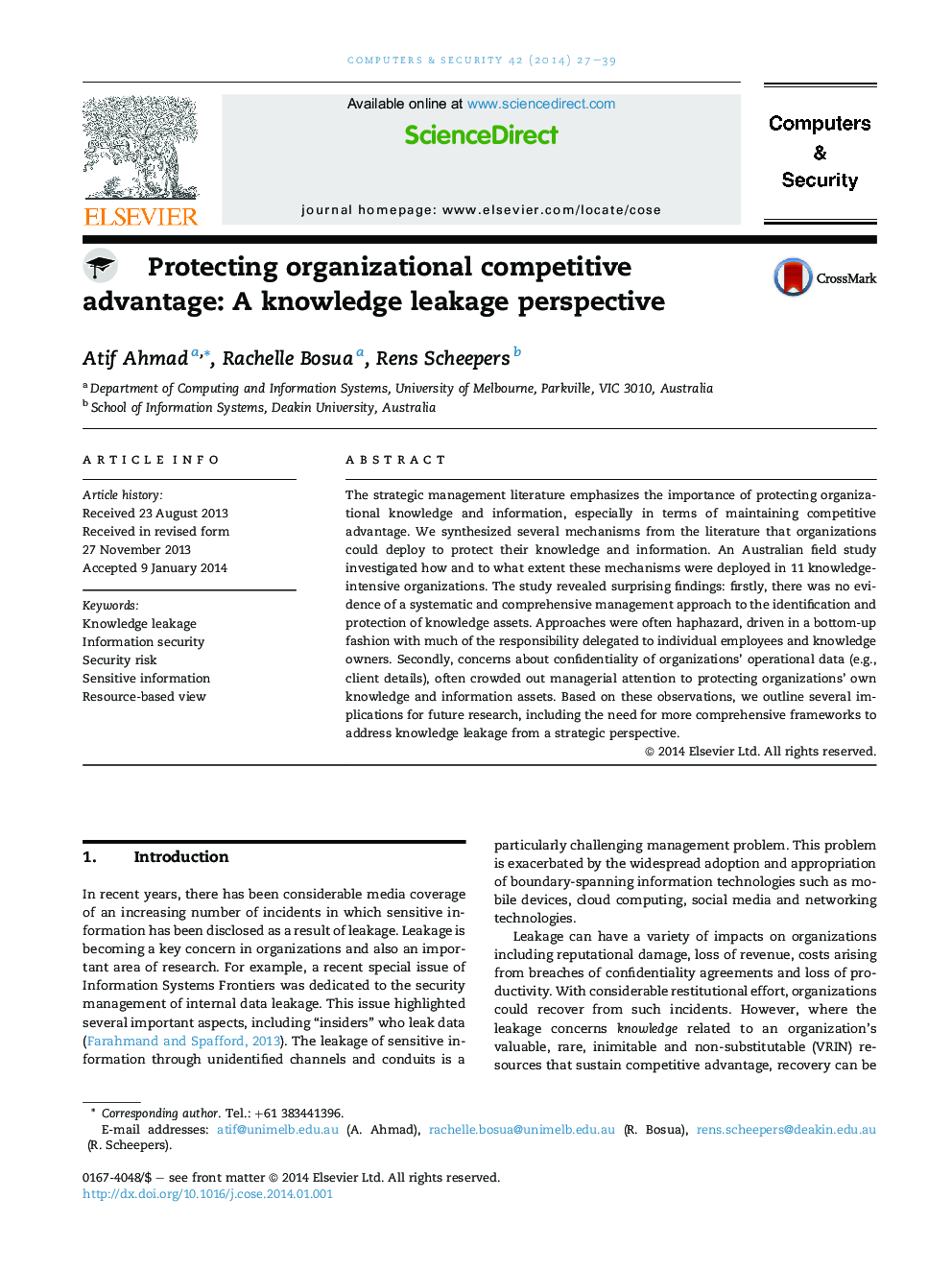| Article ID | Journal | Published Year | Pages | File Type |
|---|---|---|---|---|
| 454460 | Computers & Security | 2014 | 13 Pages |
The strategic management literature emphasizes the importance of protecting organizational knowledge and information, especially in terms of maintaining competitive advantage. We synthesized several mechanisms from the literature that organizations could deploy to protect their knowledge and information. An Australian field study investigated how and to what extent these mechanisms were deployed in 11 knowledge-intensive organizations. The study revealed surprising findings: firstly, there was no evidence of a systematic and comprehensive management approach to the identification and protection of knowledge assets. Approaches were often haphazard, driven in a bottom-up fashion with much of the responsibility delegated to individual employees and knowledge owners. Secondly, concerns about confidentiality of organizations' operational data (e.g., client details), often crowded out managerial attention to protecting organizations' own knowledge and information assets. Based on these observations, we outline several implications for future research, including the need for more comprehensive frameworks to address knowledge leakage from a strategic perspective.
Graphical abstractFigure optionsDownload full-size imageDownload as PowerPoint slide
